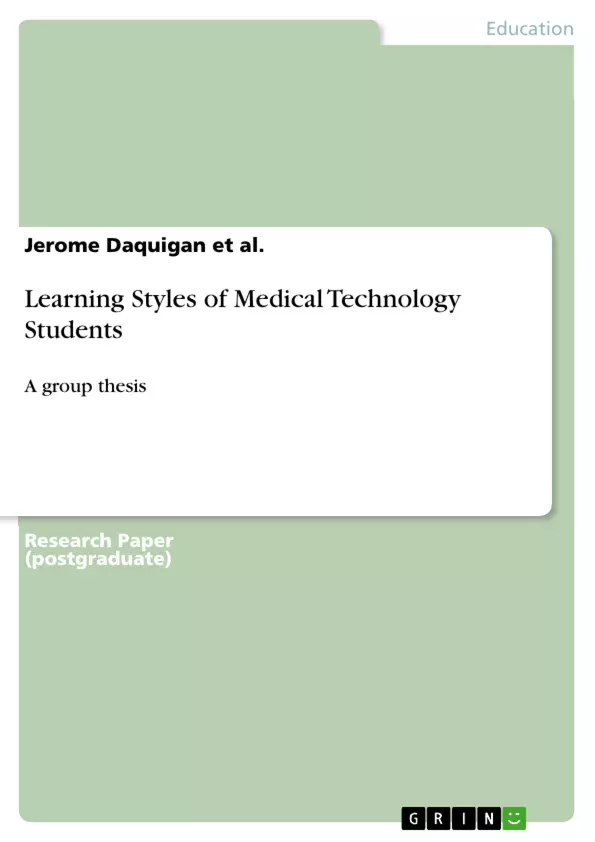Background of the Study
It is observed in the past years that some students tend to be intelligent in different ways. Intelligence has been defined and studied under a number of different rubrics, among them individual differences, cognitive abilities, and aptitudes. Probably the most influential developments in our recent understanding of these concepts have come from educational and psychological researchers associated with cognitive psychology. Three of those individuals, Robert Sternberg, Howard Gardner, and John Horn serve as a representative sample of researchers who have made significant gains in our current conceptions of intelligence.
Robert Sternberg. Sternberg's (1985) theory of intelligence contains three sub theories, one about context, one about experience, and one about the cognitive components of information processing. The contextual sub theory attempts to specify what would be considered “intelligent” in a given culture or context. According to him, culturally intelligent behavior involves adapting to one's present environment, selecting a more optimal environment, or reshaping one's current environment. The experiential sub theory claims that the expression of any intelligent behavior will be a function of the amount of experience one has with the particular class of tasks being tested. According to Sternberg, intelligence is best demonstrated when the task is relatively novel or unfamiliar. The componential sub theory describes the cognitive structures and processes that together produce intelligent behavior. Sternberg proposes three general types of processes: met components, performance components, and knowledge acquisition components. As a whole, the diarchic theory claims different aspects or kinds of intelligence.
Howard Gardner, one of the most popular recent views of intelligence, at least among practitioners, has come from Gardner. He proposes a theory of multiple intelligences in which he claims there are seven relatively independent intelligences and in 1999 added an eighth intelligence. Those intelligences are logical-mathematical, linguistic, musical, visual-spatial, bodily-kinesthetic, interpersonal, intrapersonal, and naturalistic intelligence. Additionally, Gardner recognizes that one's experiences will influence the degree to which each of the intelligences can be expressed. [...]
Table of Contents
- INTRODUCTION (Chapter 1)
- Background of the Study
- Statement of the Problem
- Significance of the Study
- Scope and Delimitation
- Materials and Methods
- Definition of Terms
- REVIEW OF RELATED LITERATURE (Chapter 2)
- Definition and Types of Learning Styles
- Accommodator
- Assimilator
- Converger
- Diverger
- Applications of Learning Style
- Criticism of Learning Styles
- SUMMARY, CONCLUSIONS AND RECOMMENDATIONS (Chapter 3)
- Summary
- Conclusions
- Recommendations
Objectives and Key Themes
This research paper aims to identify the different learning styles of second-year medical technology students at Far Eastern University. The study seeks to understand how these students learn, contributing to a better understanding of learning styles and their implications for both students and educators.- The dominant and least dominant learning styles among second-year medical technology students.
- The learning activities that second-year medical technology students excel in.
- The application of different learning styles in a classroom setting.
- The benefits of recognizing and adapting to individual learning styles for student success.
- The impact of learning styles on academic performance and student engagement.
Chapter Summaries
Chapter 1: Introduction
This chapter introduces the research study by providing background information on the concept of intelligence and its various interpretations by prominent researchers like Sternberg, Gardner, and Horn. The chapter then delves into the theory of experiential learning, highlighting its four stages and emphasizing the importance of understanding how students learn. The chapter concludes by outlining the research question and its significance for students, professors, and future researchers.Chapter 2: Review of Related Literature
This chapter presents a comprehensive overview of learning styles, exploring their definition, types, and applications. It examines various models of learning styles, including the four-stage model of Kolb's experiential learning theory. Additionally, the chapter critically analyzes the concept of learning styles, addressing its limitations and ongoing debates within the field of education.Keywords
This research paper focuses on the learning styles of second-year medical technology students. Key areas of focus include intelligence, learning styles, experiential learning, Kolb's learning cycle, and the implications of understanding individual learning preferences for educational practices and student success.- Arbeit zitieren
- Jerome Daquigan et al. (Autor:in), 2011, Learning Styles of Medical Technology Students, München, GRIN Verlag, https://www.hausarbeiten.de/document/188176


